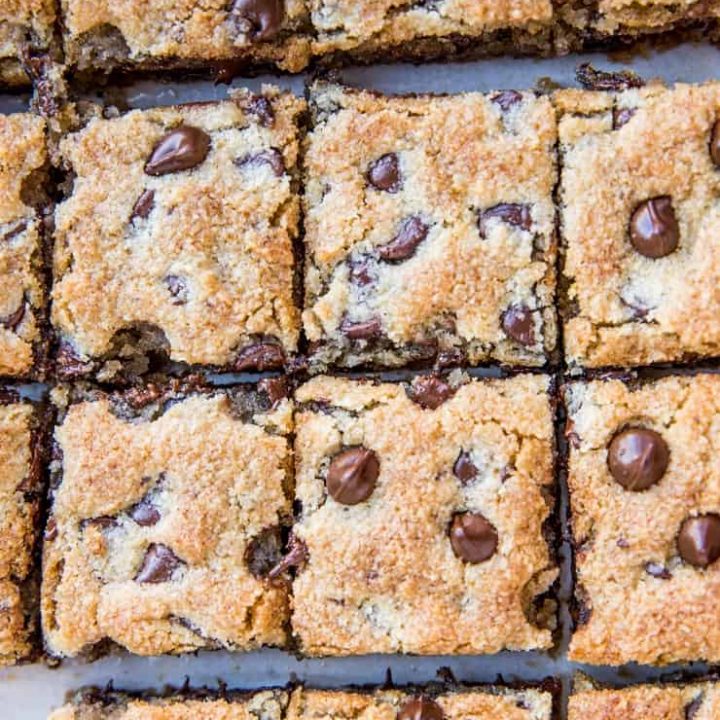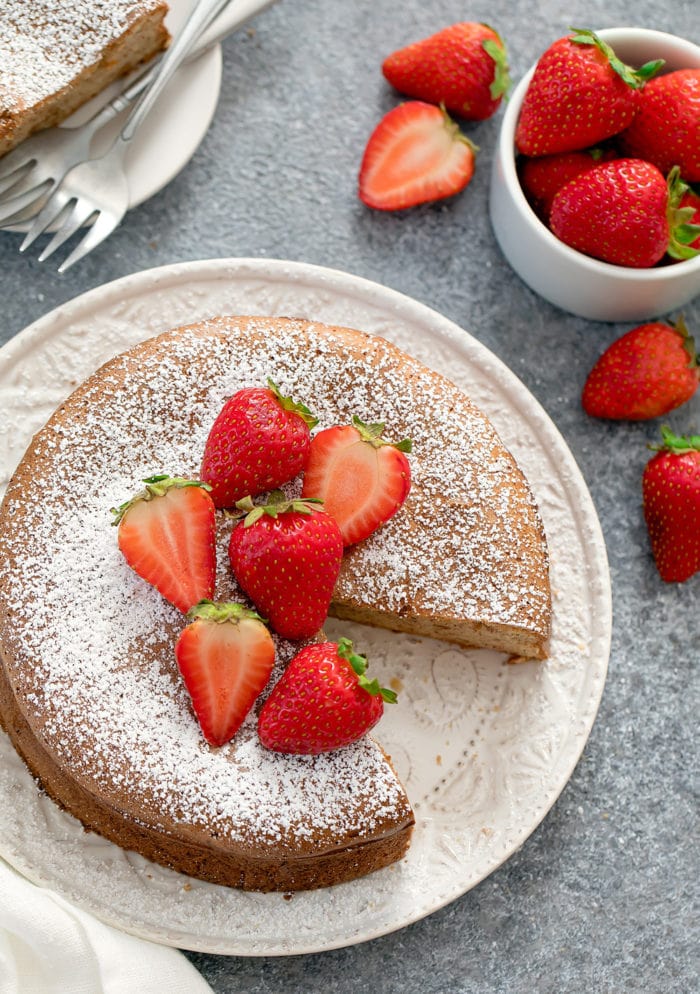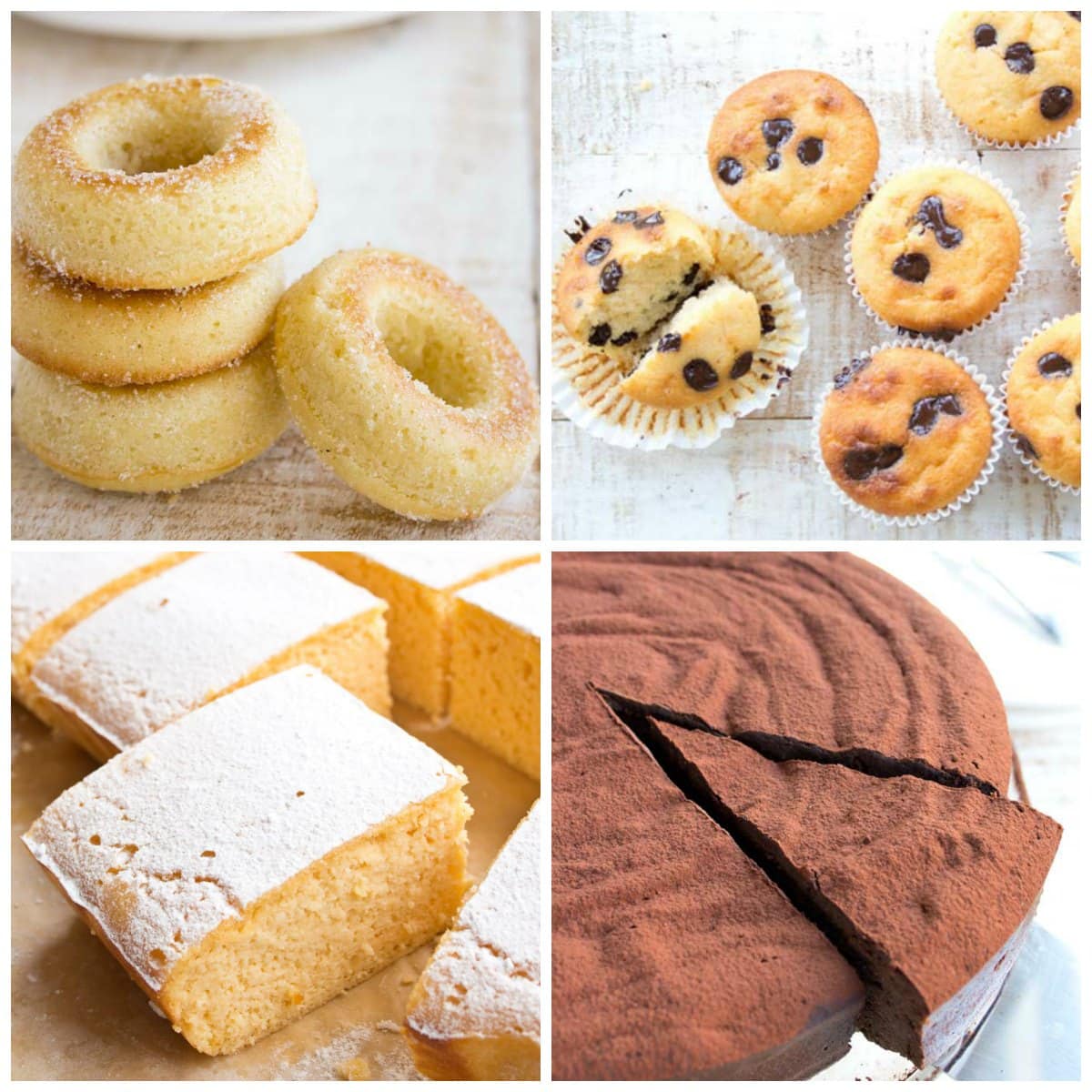TIP #1 FOR KETO BAKING: READ THE RECIPE AND PREPARE THE INGREDIENTS
This is the first common baking error. It has an impact on keto baking because of its sensitivity to ingredients, cooling time, and temperature.
Keto flours, for example, cannot be simply substituted in a recipe. Their chemistry is so dissimilar (fiber, protein, fat) that you cannot substitute one cup of almond flour for one cup of coconut flour.
They differ greatly in texture, moisture, fiber, and flavor.
Reading the instructions and preparing the ingredients ahead of time will help you avoid missing ingredients halfway through the recipe, which you will have to replace and sabotage your results.
Equipment and waiting time are also crucial factors in effective keto baking.
Unfortunately, you cannot skip the cooling time or the parchment paper while rolling a dough to avoid a nasty, sticky unrollable dough.
Remember that each step you skip, substitute, or choose not to follow will always have an effect on taste and texture.
Even if you are an expert in keto baking, you cannot afford these modifications in the realm of sophisticated chemistry!
Summary: Always read the recipe thoroughly, gather the ingredients, and begin the recipe at the appropriate time of day. The first key to success will be knowing what to expect in terms of ingredient quantity, equipment, and cooling time!
KETO BAKING TIP #2: MEASURE ACCURATELY
SOLIDS MEASUREMENT
One of the most typical keto baking blunders is measuring dry ingredients too roughly. I cannot emphasize this more. Baking is a science!
It indicates that mixing the exact liquid and solid ratios is the key to achieving the perfect texture.
As a result, I strongly advise weighing your solids (oz or grams) rather than measuring volumes.
INGREDIENT WEIGHTING
Use a kitchen scale and balance a medium-sized baking basin on it. To cancel the weight of the bowl, press the tare button. Check that the scale reads 0oz or 0g.
Then, using a tablespoon, add the flour or sweetener to the bowl. Stop when the weight of the components required for the recipe is displayed on the scale.
SOLID MEASUREMENT IN CUPS
Because cups are intended to measure volume, I do not recommend measuring solids in them because each solid has a distinct density. Flour density varies depending on how fine or coarse it is.
Because of the difference in density, a cup of high-density flour will weigh more than a cup of low-density flour.
Cups are insufficient for baking since what matters is the amount of flour.
As a general rule, you can measure sweeteners in cups, but when it comes to flours, the method you employ to fill the cup makes a considerable impact.
This is especially true for cakes, bread, and flatbread that contain a large number of keto flours, or a combination of several keto flours.
SWEEP AND SCOOP
The most common method is to scoop and sweep the cup. It entails dipping the cup into the flour container and then leveling with a knife.
That is my preferred way. It’s simple and effective if the bottom of the cup is fully filled.
Inserting a measuring cup into a small flour packaging can be difficult, and you may not scoop flour very effectively, leaving voids at the bottom.
It is always ideal to store the flour in a large container that allows you to easily insert the cup and scoop.
If you select a tall, narrow container, you will lose precision and struggle to get the filled cup in and out.
METHOD OF PACKED LEVEL
Some recipes advise using the packed level approach. If this is the case, follow the recipe’s instructions.
This procedure entails filling the cup with a tablespoon of solids, packing the solid after each addition, and continuing until the cup is full.
This method is never used in my keto baking recipes because it adds far more solids per cup than the prior method.
This method compresses the ingredients, and you may end up with up to 40% more than is required in the recipe!
If the recipe calls for more than 1 cup of flour and you measure it that way, the measurement errors will rise, resulting in a dry baked dish!
Remember that a scale is your buddy when it comes to keto flours because they have complex chemistry, a stunningly high level of fiber, fat, and so on.
A small weight variation will make a major difference in taste and texture.
To achieve the best results, measure your flours by weight. If you don’t have a scale, learn how to use your cups properly. Fill cups following the technique specified in the recipe. If a recipe does not specify the procedure, always use “scoop and sweep.”
LIQUID MEASUREMENT
To measure liquid, use a dependable US-size cup. Cups in the United States are 237ml in volume, whereas cups purchased from other nations can be larger or smaller.
In New Zealand, for example, a cup is 250ml, whereas in Japan, it is as little as 180ml.
To summarize, buy cups from reputable manufacturers and double-check their volume to ensure they meet US regulations.

TIP #3 FOR KETO BAKING: USE FRESH INGREDIENTS
Keto baking necessitates the use of different flours, sugars, and fats.
However, as a general rule, always use fresh dry ingredients.
For example, coconut flour has 35% fiber (while wheat contains only 4%! ), so if you store it in an open container or leave it at room temperature for an extended period of time, it will absorb moisture.
This will cause lumps and a change in the chemistry of the flour, making it less absorbent. The same is true with baking powder.
If kept dry, the raising agent will last 6 to 8 months. The baking powder absorbs moisture and becomes inactive if the container is old or has been in touch with moisture.
To summarize, use fresh ingredients and store them according to the manufacturer’s instructions.
TIP #4 FOR KETO BAKING: MEASURE THE INGREDIENTS BEFORE BEGINNING
How many times have you started a recipe only to realize halfway through that you’re missing an ingredient? Or do you notice in the end that you left out an ingredient?
The quality of ingredients is critical in keto baking. You cannot substitute one ingredient with another without affecting the outcome.
To guarantee that your cake or bread turns out perfectly, always measure and prepare all of the ingredients in separate dishes before beginning the process.
A well-written ingredient list, like a movie, should be in chronological order.
If you’re new to baking, arrange your pre-measured ingredients on your counter in the order you’ll add them to your mixing bowl.
Following a recipe is significantly easier if your components are easily accessible and measured.
Summary: Set up your bench with all of the materials pre-measured in separate containers.
KETO BAKING TIP #5: USE THE RIGHT TEMPERATURE FOR THE INGREDIENTS
In baking, the temperature of the components makes a huge influence.
It is especially important in keto baking because many eggs and fats are solid below 23°C/73°F.
Let us first discuss eggs.
Cold eggs, directly from the fridge, give pancakes and toast a rich egg flavor.
If they come into contact with coconut oil, they will create oil lumps since coconut oil solidifies at temperatures below 23°C/73°F.
Bring the eggs to room temperature before baking to avoid this problem.
This can be accomplished by submerging your eggs in lukewarm water for 15 minutes or by removing your eggs from the fridge for 4 hours or overnight before beginning a dish.
Melted butter or melted oil is another item that should be at room temperature. When boiling liquid comes into touch with eggs, it can cook them and cause egg lumps in the batter.
Hotter liquids than 50°C/120°F will kill the yeast cells and render them ineffective.
Finally, several keto recipes call for lukewarm water (>37°C/>100°F) to activate the fibers in whole psyllium husk or flax powder.
This is critical for recipe success because cold water will not give the dough any elasticity, resulting in a very moist, undercooked bread or wrap.
When you use ingredients, they must be at the proper temperature.

KETO BAKING TIP #6: USE AN EXACT OVEN TEMPERATURE.
It’s crucial to understand that a toaster oven, keto or not, isn’t designed to bake cakes or bread.
You must use a conventional oven that has been preheated for at least 15 minutes in normal or convection mode so that the temperature is consistent throughout the oven chamber.
If you’ve had trouble baking keto bread or cakes in the past, I recommend using a thermometer to check the temperature of your oven. It’s a great technique to check the accuracy of your oven thermostat.
Most oven temps are not well calibrated, unless your oven is very new.
Even after spending far longer time in the oven, if your oven is 10°F lower than indicated by the recipe, a loaf can come out very moist, sticky, and never bake inside.
Finally, while baking, never open the oven door. This may cause a temperature shock in your recipe and will quickly deplete cakes and bread.
Wait 10 minutes before the end of the indicated cooking time to slightly open the oven door and verify the baking process with a skewer put in the center of the cake.
Summary: Preheat your oven, check the temperature, and don’t open the door too soon.
KETO BAKING TIP #7: MAKE THE DOUGH
Some recipes call for shaping the dough with your hands or keeping track of the kneading time.
All of these procedures have an effect on how the recipe will rise and texture. For example, egg-free keto bread recipes frequently call for leaving the circular loaf in the center of the pan.
This method will affect how the bread rises in the oven. If you flatten the dough, it will become wet, flat, and too dense.
Some pizza, bread, and flatbread recipes are highly specific about kneading time or resting time before utilizing the dough.
Over-kneading a keto dough can result in a dry, crumbly dough, while under-kneading might result in a poor distribution of fiber in the dough, resulting in excessively wet bread after baking.
In conclusion, the shape of the dough and the kneading time are critical.
8. COOLING DOWN IS KEY IN KETO BAKING.
How many times have you had a nicely risen cake or bread that deflates as soon as it comes out of the oven?
Temperature swings can damage your baking. Always allow your baked goods to cool in the pan for 5 minutes before transferring to a cooling rack.
Also, if your residence is really chilly (19°C/66°F), place your baked goods in a room that is at normal temperature (23°C/73°F) to avoid a sudden temperature change that flattens cakes and bread.
In conclusion, cooling down is equally as vital as baking.

TIP #9 FOR KETO BAKING: ADJUSTING RECIPES FOR HIGH ALTITUDE
Baking is affected by altitude. If you reside at a high altitude (3,000 feet or higher above sea level), your baking recipe should be slightly modified to ensure that your baked items rise evenly and cook properly.
The reduced air pressure at high altitude has the following consequences:
baking time- to avoid dense, dry cakes, lengthen the baking time.
Bread and cake raising – air bubbles in the batter cause the batter to rise faster, resulting in holes in the center of the bread or cake.
You can make the following changes:
Increase the temperature of the oven by 25°F.
Half the baking powder should be used.
Grease baking pans twice or line with oiled parchment paper.
Fill the pan to half its depth, not two-thirds, as is commonly recommended for muffins. This keeps muffins and cupcakes from overflowing.
Adjust the liquid by adding 2 to 4 teaspoons of liquid (water, almond milk).
Want the best recipes for Keto diet? Want to still be able to eat bread, pizza, and sandwiches? For the best tasting Keto recipes ever collected into a master collection by clicking here


